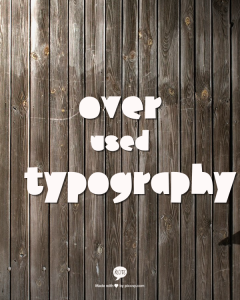5 Web Design Pitfalls to Avoid in Blogging
(This is a guest blog post from Rachel Sanders from http://www.webdesignschoolsguide.com/)
Designing a blog isn’t as easy as it seems. Although there are thousands of blog templates out there, many of them aren’t all that aesthetically appealing. The best blogs on the web are ones that relay interesting information while remaining visually coherent, and it’s often difficult to balance these two important factors. While it is true that there is no one secret to creating an effective, interesting blog, it’s useful to know what you should definitely avoid in your designs. For those of you who want draw in an audience and keep them coming back for more, here is a list of five common pitfalls to avoid while designing your blog.
 1. Lack of order and structure
1. Lack of order and structure
It’s the duty of a web designer to create a webpage that has both order and structure. Whenever you’re putting your blog together, focus on creating coherence with your logo, images, main text, sidebars, ads, etc. Imagine how your visitors will feel when they visit your blog: Where will their eyes be drawn to? Will they understand the order of items? Do you think they’ll feel overwhelmed by everything on the page? Whatever design feature you want to stand out the most, whether it’s the logo, images, text, etc., make sure that item takes has the most precedence in your design endeavors. Having a readable blog is crucial if you want to develop a loyal following, so always pay attention to the order and structure of things.
2. No search bar
As a person who loves to search through blogs, I have to say one of the most frustrating things about today’s blogs are that they are usually missing a search bar. Although you might think that most web designers would be wise enough to include one, you’d be wrong. Remember, web design is more than just creating a beautiful webpage; it’s also about creating a navigable website. Without a search bar, your readers are left to fend for themselves without a clue where to find what they’re looking for. In fact, readers often search out blogs to find specific posts and stories, so going without a search field is absolutely out of the question. Even if you think a search bar is absolutely grotesque in web design, get over it. It’s necessary on every webpage, including blogs.
 03. Overused typography
03. Overused typography
Times New Roman, Helvetica, Baskerville, Garamond, Bondoni. These are all fonts that get overused in web design. Don’t get me wrong: They are all beautiful and useful, but they’re abused. Whenever you design your blogs, make sure to venture beyond the typical, trusted fonts. Be adventurous, but not crazy. As I’m sure you know, fonts are meant to make a statement: some look professional, some look retro, some look futuristic, and some look elegant. Whatever font decision you make, make sure it’s right for the blog’s theme and message. Aside from font choice, also consider font size, font spacing, font color, and typeface style (such as bold, italics, etc.)
 4. Lack of universal consistency
4. Lack of universal consistency
In order to achieve a universal consistency, everything in your blog must fit together. Although you might have a beautiful font, it might not jive with the background color or accompanying images. Whenever you’re trying to create a universal consistency consider things like headlines, background colors, photo choices, spacing, illustration styles, and so forth. Everything should be strong enough to stand on its own, but also be strong enough to make a coherent design statement throughout the entire blog. Inconsistencies in design are like stains on clothes: They’re unintentional, but easily recognizable. The quickest way to create universal consistency is to make all your design decisions right away and stick to them.
 5. No imagination
5. No imagination
Alright, I saved the worst pitfall for last! So many web designers are so confined to rules that they refuse to embrace a little creativity and imagination. Whatever you do, don’t allow your creativity to be stifled. If you want to try something unconventional, test it out and see what it looks like. Take a moment to study your unconventional creation and decide if it’s of value to your blog. If it is, pat yourself on the back for a job well done. If it isn’t, try again! Don’t stick to the basic rules; be a transcendentalist and follow your gut. The best web designers are the ones that have their roots planted in the basics of web design but still embrace a little adventure and imagination.
A web designer must focus on a number of items whenever they decide to create a blog. There is an endless assortment of ways to design a great blog, but there are definitely some things that should always be avoided. Whatever you do, don’t fall victim to these previous five pitfalls!
As a blogger for www.WebDesignSchoolsGuide.com, Rachel Sanders has a passion for helping potential and current web design students fulfill their education and career goals. Always looking for the latest and greatest in web design news, Rachel also writes about education in general, computer technology, and student life. Feel free to leave your comments and questions for her below!

 1. Lack of order and structure
1. Lack of order and structure
 03. Overused typography
03. Overused typography 4. Lack of universal consistency
4. Lack of universal consistency 5. No imagination
5. No imagination